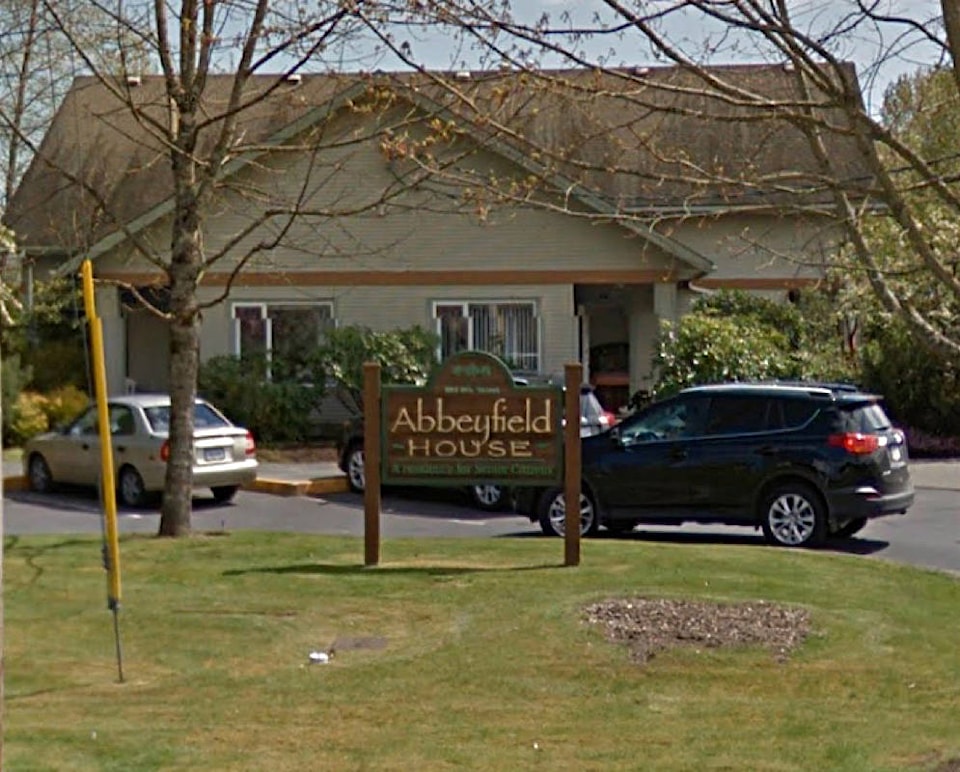Ten Comox Valley seniors are on the hunt for a new home, as Courtenay’s Abbeyfield House is anticipating closing their doors at the end of September.
Located at Eighth Street and Pidcock Avenue in Courtenay since it opened its doors in 1997, the non-profit Abbeyfield House is a retirement home which features 10 individual bedroom suites with their own TVs, bathroom and patios, and furnished with residents’ own belongings.
The kitchen, dining room and sitting areas are common spaces, and three meals a day are provided for residents.
Volunteer board member Joan Carson said it’s designed for people 55 and older who want to maintain some independence but don’t want to live by themselves.
Monthly fees, set at $1,820/month, hadn’t been increased in several years. It was following a rent increase when problems began to arise, added fellow board member Elizabeth Day.
“About a year and a half ago, we went to arbitration over the rent increase and we lost our designation. We found out that we do, in fact, fall under the landlord act and rules.”
Abbeyfield House - which has established facilities in a variety of communities across the province, country and world - originally operated under independent supportive living. That meant there was some personal care and services provided, but there were no registered nurses on site or available 24 hours a day.
“People needed to make their own decisions,” added Day.
Residents are allowed to come and go as they please, with no need to sign in or out.
Another issue, she said, is that Island Health has a lack of appropriate places for seniors who need more care. The facility has had 115 visits by Island Health workers a week for 10 residents.
“Our philosophy encompasses independent living for people who look after their own lives,” added Carson.
Because of the Residential Tenancy Act, as landlords, volunteers and staff cannot enter a residence without appropriate 24-hour notice. Day said this created a large problem, as a tenant who may not come out for lunch may be napping or resting, but if they do not answer the door, staff are required to call an ambulance in order to enter the residence to check.
Day admitted the change in designation from independent supportive living to landlords sets a precedent, and that “all similar facilities are in jeopardy.”
Because Abbeyfield House is not-for-profit, Day said the legal fees are too high in order to fight the arbitration decision.
Now, she added, clients are inappropriately placed in the facility because Island Health is providing support instead of putting seniors into appropriate facilities.
Because of both situations, the board came to “not an easy decision,” said Carson.
“But we realized we would never be able to initiate the Abbeyfield philosophy. It’s gone from a joyful situation to a situation where there are no real activities. There are people who require significant care - it’s certainly not an independent home.”
Abbeyfield Houses are established in many communities. Originating in London, England, the first Abbeyfield House in Canada opened in 1987 in Sidney, B.C.
The Church of St. John the Divine fundraised to construct the Abbeyfield House in Courtenay but the home is now operated by a non-profit and non-denominational society with community members sitting on its board.
Because of privacy restrictions and the RTA agreement, staff or volunteers cannot initiate a transfer placement for tenants through Island Heath, explained Day, who added there are also concerns in the safety factor for the tenants.
In the meantime, she noted the board “wanted to do the right thing” and retained an eldercare solutions company to aid in the transition.
Looking ahead, Carson said the board is beginning the process of winding down, and is exploring all options and possibilities on how the facility can be used for a community purpose.
“The assets can be sold and will stay in the community one way or another,” noted Day.
